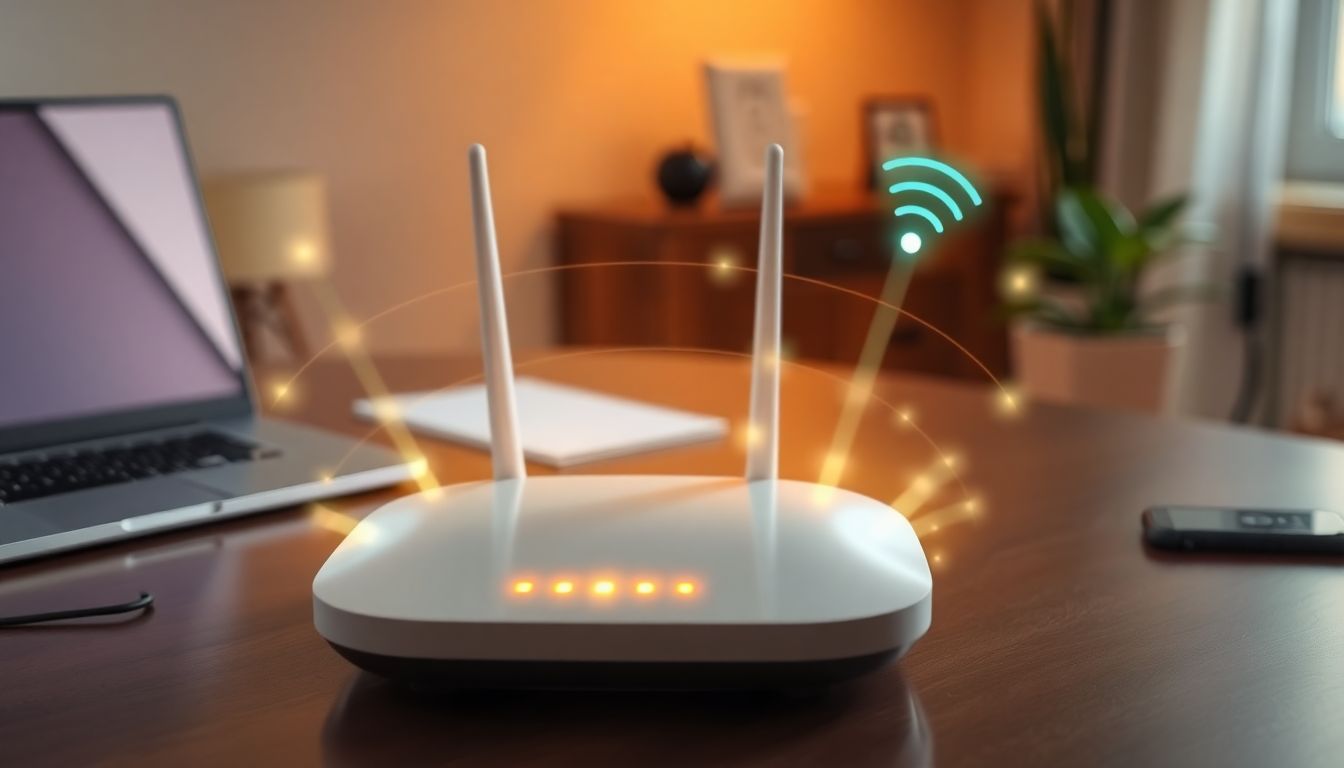Introduction
Wi-Fi modems are everywhere these days. They have us connected in the office or at home, and our life is convenient. But many of us are wondering, do these little devices use much power? Are they adding to our bills? This article informs you about how much power does a Wi-Fi modem use, what affects the power, and how to conserve energy. Ready for simple tips to make your modem use less power?.
A Guide to Wi-Fi Modems and How They Get Powered
What is a Wi-Fi Modem?
A Wi-Fi modem connects your house to the internet. It transforms your internet service provider signals to internet signals, making you reachable to the internet online. It contains elements like a processor, an antenna, and a power supply. There are other modems that also act as routers, sharing Wi-Fi signals with other devices. Most devices combine both into one device, saving space.
Average Power Usage of Wi-Fi Modems
Most Wi-Fi modems consume minimal electricity. They will draw 5 to 15 watts. For instance, a simple model will draw 8 watts, and an advanced one will draw 12 watts. That is less than a light in an hour. The older and larger models draw more electricity.
How Wi-Fi Modems Use Electricity
The modem has to be powered to process data, send signals, and stay connected. If you are connected through Wi-Fi, the modem sends data all the time. If nobody is connected, it will switch off or go to standby mode. But it keeps some parts running in case you reconnect. That’s why it never uses zero power.
Factors That Determine Wi-Fi Modem Power Consumption
Modem Type and Technology
Different modems use different amounts of energy. For example:
- DSL modems will use less energy.
- Cable modems will use a little more energy.
- Fiber optic modems will use less energy.
- 4G/5G hotspots will use more power because they use cellular connections.
Future models that use less energy will save energy compared to their predecessors.
Usage trends and network traffic
As much as you’re loading the internet will count. Watching or large file downloading will load the modem more. Several devices plugged in consume more power. But if your Wi-Fi is dormant for an extended period, several devices go to sleep mode, which saves power.
Power Settings and Configuration
There are different modems that have power-saving functions. You can enable sleep modes or disable Wi-Fi when you are not using it. Firmware update or configuration adjustment can also minimize the energy usage. Proper installation makes your modem work no harder than necessary.
External Factors
Placement is important. Locating your modem in a ventilation area at normal temperature avoids overheating, which raises power consumption. Employing a reliable, quality power supply cancels out excessive waste of energy caused by voltage fluctuations.
Real-World Facts and Expert Information about Wi-Fi Modem Power Consumption
Energy Consumption Statistics
Research has shown that an average modem will use between 10 to 15 kilowatt-hours (kWh) annually. That is nearly a couple of dollars annually on electricity charges. That is far less energy usage compared to refrigerators or air conditioners.
Expert Opinions
Energy experts state that most Wi-Fi modems are quite energy-efficient these days. The U.S. Department of Energy recommends customers to choose models with a high energy efficiency rating. According to them, even small adjustments, like switching the modem off when not in use, will benefit in the long run.
Other houses track how much energy their modem uses. They understand that by turning off the modem at night or when away for long journeys, they cut a few dollars in bills each month. Keeping the modem updated and turned on for energy-saving mode too saves them some sum of money.
How to Reduce Electricity Consumption of Wi-Fi Modems
Choosing Energy-Saving Devices
Purchase models with the Energy Star brand. They are certified to consume less energy. Purchase newer models with new technology. They are generally more energy-saving and longer-lasting.
Improving Usage Practices
Turn off your modem during long vacations or when unnecessary for a couple of days. Boot it occasionally to make it run. Turn off or disable Wi-Fi when not using Wi-Fi.
Assist sleep mode or automatic shut-off features. Use configurations that can turn off Wi-Fi during parts of the day. Change channels and bands to be more efficient, avoiding energy wastage.
Using External Power Management Devices
Remote power control of your modem is provided through smart plugs. Energy monitors show its power usage. Home automation systems will be saving power automatically by switching off devices when unused.
Cost Implications and Environmental Impact
Calculating Electricity Costs
Using an average of 10 watts, running your modem 24 hours a day costs about $1 per month, depending on local electricity rates. Turning it off when not needed can save several dollars annually.
Environmental Considerations
Lower energy use means fewer carbon emissions. Small changes in your modem’s power habits add up. Using efficient devices helps protect the environment by reducing your carbon footprint.
Conclusion
Wi-Fi modems do consume power, but minute quantities only. They consume no more power than to light a small light bulb. Save money by choosing power-efficient models and by changing behaviors. Saving power by shutting off or setting your modem to sleep mode saves you money and the world. It is easier than you believe to save both power and the environment. Little things go a long way to making big impacts on lots of your money and on the planet.
